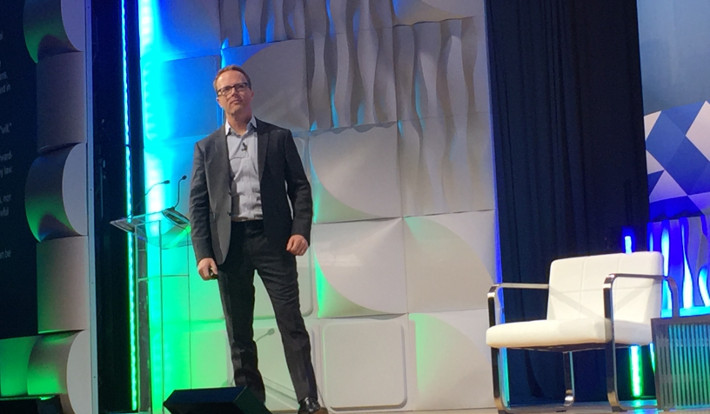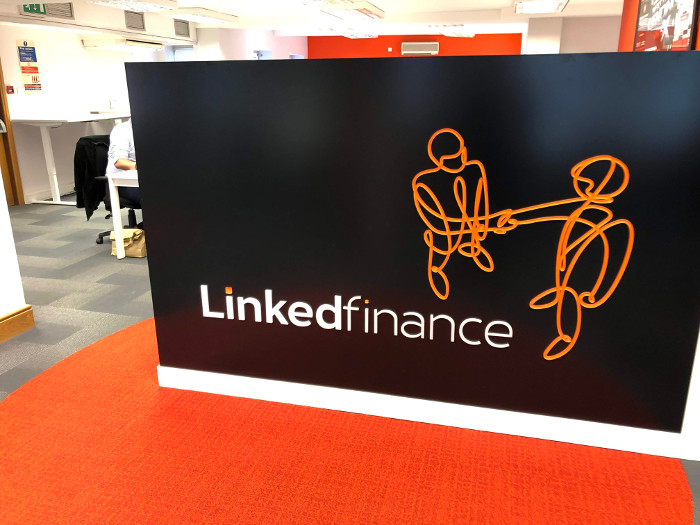p2p lending
Flender Makes BIG Mark in Ireland’s SME Lending Market
November 26, 2019 Ireland can seem like a small place, so much so that on my way to meeting with Colin Canny, Flender’s Head of Partnerships, I quite literally bumped into Flender’s co-founder & CEO Kristjan Koik who was walking through Dublin’s Silicon Docks. I recognized Koik from the who’s who catalogue of executives I had compiled before traveling abroad to explore the Irish fintech scene. He was cordial and polite. And yet through his demeanor I sensed there was more, that there was a story to be told even if it was not ready to be shared.
Ireland can seem like a small place, so much so that on my way to meeting with Colin Canny, Flender’s Head of Partnerships, I quite literally bumped into Flender’s co-founder & CEO Kristjan Koik who was walking through Dublin’s Silicon Docks. I recognized Koik from the who’s who catalogue of executives I had compiled before traveling abroad to explore the Irish fintech scene. He was cordial and polite. And yet through his demeanor I sensed there was more, that there was a story to be told even if it was not ready to be shared.
The following month Flender would reveal remarkable news, a new €75 million funding line, bringing their total to €109 million raised since the company’s founding in 2015. The company is backed by Eiffel Investment Group, Enterprise Ireland, entrepreneur Mark Roden and former Ireland rugby player Jamie Heaslip.
This large amount of funding, even by UK or US standards, makes Flender stand out, and so when I finally meet with Canny on that warm Fall day in September, I’m pretty thankful he afforded me the time.
Flender, Canny explains, is derived from Flexible Lender. The pamphlet he produces and hands to me says that their idea is simple, to provide businesses with the funding they need and ensure the application process is fast, easy, and transparent.
Application details for products like term loans and merchant cash advances require the usual stips like historical bank statements, a profit & loss statement, and a balance sheet. But there’s also a section quintessentially Irish, that is that it can be beneficial to submit your last 2 years herd numbers if you’re a farmer, complete with your last 12 months Milk Reports and property acreage figure.
 Canny explains that Flender is not a high-risk fall-back lender, but rather the opposite. “Our credit process is extremely tight,” he says, “in line with banks.” And with good rationale, seeing that the company is still somewhat reliant on a peer-to-peer funding model. More than half of individual peers on the platform are Irish but Canny says that it’s not unusual for non-residents including Americans to lend on the platform as well.
Canny explains that Flender is not a high-risk fall-back lender, but rather the opposite. “Our credit process is extremely tight,” he says, “in line with banks.” And with good rationale, seeing that the company is still somewhat reliant on a peer-to-peer funding model. More than half of individual peers on the platform are Irish but Canny says that it’s not unusual for non-residents including Americans to lend on the platform as well.
Canny says the Irish market is very “community based.” The transparency of the marketplace aligns with that characterization. Like other peer-to-peer small business lenders in Ireland, borrower identity is publicly accessible on the platform, as are the terms of the loan. Anyone can view the business name of a prospective borrower on the website, the address, a bio, and even their “story.”
Flender taps several marketing channels like Google Adwords, radio, direct sales, and even brokers. Canny says they generate an underwriting decision in as quick as 4-6 hours and fund a business in as little as 24 hours. Borrowers like the product so much that many renew. Seventy percent of the SMEs in the country are peer-to-peer bankable, Canny explains, creating a wide playing field to target.
Meawnwhile, CEO Kristjan Koik told the Irish Times that the top 3 banks in Ireland have 92 percent of the SME lending marketshare so there is still a ton of opportunity for non-banks like Flender to grab hold of.
As for how the massive credit line impacts them going forward? Koik told the Times that they would be cutting interest rates by up to 1 percent across their various loan products. Interest rates now start as low as 6.45% and terms range up to 36 months.
As Canny and I part ways I present one final question, will Flender be expanding abroad? I get no definitive answer. He was cordial and polite, and yet I sensed through his demeanor that there was more, perhaps even a story in the works that was not yet ready to be shared.
Funding Circle UK Referring Some Large Loan Applicants to Competitors
November 11, 2019Funding Circle UK has begun to refer applicants seeking an amount above their maximum loan size limit of £500,000 to Iwoca, MarketInvoice and French bank BNP Paribas, The Sunday Times reported. Previously, Funding Circle would just turn them away.
Lending Club Originated $3.3B in Loans in Q3
November 5, 2019 Lending Club originated $3.3B in loans in q3 and reported a minor net loss of $400,000. That loss was a $22.4M improvement over the same period last year, mainly due to an increase in “net revenue” and a decrease in class action and regulatory litigation expense. One of those class action lawsuits against them was dismissed on October 31.
Lending Club originated $3.3B in loans in q3 and reported a minor net loss of $400,000. That loss was a $22.4M improvement over the same period last year, mainly due to an increase in “net revenue” and a decrease in class action and regulatory litigation expense. One of those class action lawsuits against them was dismissed on October 31.
Lending Club is the number one provider of personal loans in the country and is continuing to grow their marketshare, CEO Scott Sanborn said during the earnings call. One analyst asked if their continued lead on that could be due to the market’s declining emphasis on growth as a performance metric. Sanborn responded by saying that the competition had not let up at all on marketing and that direct mail marketing and competition is still at operating at an extremely high level.
How Linked Finance is Linking Irish SMEs With Quick Loans
October 1, 2019 Google Maps was convinced that I was already at my destination, but that didn’t make sense because I was still sitting in my cramped Airbnb rental apartment in Dublin and hadn’t left to go anywhere yet. “Oh man please tell me Google works in Ireland,” I said to myself while glancing at the time and counting how many minutes I’d be late to my first meeting.
Google Maps was convinced that I was already at my destination, but that didn’t make sense because I was still sitting in my cramped Airbnb rental apartment in Dublin and hadn’t left to go anywhere yet. “Oh man please tell me Google works in Ireland,” I said to myself while glancing at the time and counting how many minutes I’d be late to my first meeting.
I was on my way to Linked Finance, a peer-to-peer SME lender based in Dublin. Their office was uncannily close to where I was staying on Liffey Street Lower, just steps away from the Ha’penny Bridge. So close in fact, that Google Maps believed that I was going to and from the same location. I breathed a sigh of relief at the realization and ventured the short distance to the elevator that promised to deliver me to the inner universe of Irish fintech.
 Alan Fagan, the company’s head of marketing, greeted me at the door. Fagan joined the company in 2015, two years after its founding. As we walk in, I notice the prominent display of the Linked Finance logo amid an ocean of eye-popping orange. The look, the feel, suddenly I feel transported to the tech scene in San Francisco. The accents overheard in the background, however, suggest I am most definitely in Ireland.
Alan Fagan, the company’s head of marketing, greeted me at the door. Fagan joined the company in 2015, two years after its founding. As we walk in, I notice the prominent display of the Linked Finance logo amid an ocean of eye-popping orange. The look, the feel, suddenly I feel transported to the tech scene in San Francisco. The accents overheard in the background, however, suggest I am most definitely in Ireland.
We sit down. Tea is offered. I decline. Fagan gets right into it and he sings a familiar song, that it can take a very long time for a business to get a bank loan.
It can take up 8 weeks to get funded, he says. “SMEs are the biggest employer in the country,” he explains, while hinting that facilitating loans to this demographic is as much a patriotic endeavor as it is a business one.
The nation’s Central Statistics Office puts the number of active enterprises in the private business economy at over 250,000. As of June, Linked Finance had made more than 2,100 loans for a grand total of more than €100 million.
Fagan gives me a demonstration of the platform, where individual investors (or peers) can see the name and location of the businesses whose loans are available to fund. An investor can even sort the listings by county, of which there are 26 in the Republic. Linked Finance does the underwriting, something they can do within 1 day, Fagan says.

The underwriting is tight. “We’re not a lender of last resort,” Fagan explains. They put themselves on the same (or better) credit risk footing as banks and claim that they’re able to assess risk and provide funds in a much more efficient manner. “We feel we do it better than banks,” Fagan says.
Most loans close quickly, thanks in part to their Autobid tool. Investors can be from anywhere so long as they’re over 18 and have a European Union bank account. Annual interest rates on the loans range from 6% to 17.5%.
Fagan says that although they are an online lender, many borrowers in Ireland still appreciate personal relationships. They can accommodate applicants that prefer a personal walk-through by a real person and that it can actually leave a memorable impression on their customers.
Marketing is done via a variety of direct methods but also through channel partners like accountants and financial advisors. A big name asset manager, Paris-based Eiffel Investment Group, with €1.5B under management, is among the loan investors on the Linked Finance platform.

I keep waiting for the caveat, an obstacle or twist in the model so inherently Irish, that somebody like me from half a world away would never truly grasp. But there isn’t one. The market is overtly familiar, yet more reminiscent of the UK than the States. Ireland lacks the robust regulatory framework of both countries, however. Despite that, the government does not appear to be holding the industry back. In June, Paschal Donohoe, the Minister for Finance, the government official responsible for all financial and monetary matters of the state, said “availability of credit is a key consideration for all businesses, and I am aware of the role peer to peer lending is playing in broadening competition in the SME finance market.”
Indeed, such competition has made credit more available in markets abroad.
As our time together winds down, I mindlessly attempt to plot my trip back. “Siri, take me home,” I speak into my phone. The Maps app opens and then loads to reveal a double entendre. It seems I am already very much there.
Could Peer-to-Peer Lending Be Resurrected By Falling Interest Rates? At Least For Now?
September 19, 2019 As interest rates rose and yields for investors at peer-to-peer (p2p) lenders collapsed, the allure of p2p lending, at least from my perspective, was gone.
As interest rates rose and yields for investors at peer-to-peer (p2p) lenders collapsed, the allure of p2p lending, at least from my perspective, was gone.
Rates on FDIC-insured CDs hit 2.5% while annual returns at some popular p2p lenders had declined to less than 5%. That’s a very narrow spread between an investment that has no risk of loss versus one that has a risk of losing everything, is rather unpredictable, and is marred by a history of misleading investors and overstating returns.
I compared the options and made the obvious decision and started withdrawing my personally invested funds out of p2p lenders 3 years ago in favor of more traditional investments like stock index funds.
But now interest rates are falling and it’s possible that retail investors once wooed by modestly generous savings account rates could begin to consider alternative options to generate returns. Enter P2P lending, again.
At Lending Club, the percentage of individual investors has trended downward consistently. In Q1 2015 these investors accounted for 19% of all platform originations with a total of $308 million. In the most recent quarter, that group has shrunk down to 5% of originations and only $155 million.
But at StreetShares, an online small business lender that offers individual retail investors a fixed 5% annualized return, the trend is the opposite. In a recent statement the company filed with the SEC, they claimed they had actually shifted away from funds from institutional capital providers and towards funds from retail investors. It doesn’t get into the specifics about why that is but it’s certainly unusual. StreetShares’ investment offering carries a total risk of loss much like other p2p lenders.
But interest rates aren’t supposed to fall in a void where nothing else in the outside world is happening. Assuming the economy is cooling, or worse, eventually heading towards a recession, the somewhat attractive looking p2p loan yields will fall as well since defaults on the underlying loans will rise.
So what does this mean? It means that online lenders, to the extent they’re still interested, have a potentially short window to entice retail investors back. To do so, they’ll have to convince the world that past transgressions are behind them and that low savings account rates can be supplanted by people helping their peers in return for a slightly better yield. That’s how the entire concept took off to begin with. I say the window is short because once we’re actually in a recession, it will become incredibly hard to convince fearful investors to participate in making risky online loans especially if the average returns drop into the negative. Don’t be surprised when that happens.
Peer-to-Peer Lending’s Global Struggle
July 8, 2019New rules were introduced to peer-to-peer lending in Britain this month with the introduction of Policy Statement 19/14 by the government. The document heralds in a number of new processes that will be required to be enacted by peer-to-peer lending platforms in the UK by early December this year, if they are to continue operating unmolested.
Among these rules is the expectation for stricter transparency and honesty between platforms and potential investors, specifically with regard to the practice of using borrowers’, investors’, and even the business’s own money to pay for defaulted loans. As well as this there is the introduction of appropriateness tests to ensure that those who are candidates to become investors understand the various risks of the industry they are prospecting.
Such tests aren’t new to the alternative finance industry, as they have been previously employed for both crowd bonds and equity crowdfunding. But that doesn’t mean that they will comfortably slide into use among peer-to-peer lending processes. The question about when they will be asked to complete the test during the application, be it at the beginning, upon completion of the first form, or after receiving confirmation of a loan, remains unanswered; there are concerns that lending platforms will take a ‘tick all boxes’ approach and pose unsatisfactory questions; and the fear that only larger firms will be able to afford the costs to install these compliance checks, thus edging out smaller peer-to-peer lending companies from the market, is common.
 The publication of the document comes after years of success for peer-to-peer lending within the British market. With the previous 12 months showcasing £6.7 billion in peer-to-peer loans being taken out, more than any other European country, the market initially appears to be doing well, but stories about firms collapsing or exiting from the industry indicate otherwise. For example, Lendy, one of the first and largest peer-to-peer platforms in the UK collapsed and left 20,000 investors uncertain about the £160 million that was outstanding in loans; while BondMason withdrew completely from the market, pivoting into alternative property investment services.
The publication of the document comes after years of success for peer-to-peer lending within the British market. With the previous 12 months showcasing £6.7 billion in peer-to-peer loans being taken out, more than any other European country, the market initially appears to be doing well, but stories about firms collapsing or exiting from the industry indicate otherwise. For example, Lendy, one of the first and largest peer-to-peer platforms in the UK collapsed and left 20,000 investors uncertain about the £160 million that was outstanding in loans; while BondMason withdrew completely from the market, pivoting into alternative property investment services.
Looking forward, it appears as if lending platforms in the UK may become less reliant on retail investors and seek out more institutional investors who better understand the risks of peer-to-peer lending.
Peer-to-peer lending has gone through it own iterations in the US, with two platforms still thought of as peer-to-peer (but perhaps are no longer!) recently squaring off with the SEC. Last year, two former executives of Lending Club agreed to settle charges with the SEC for improperly adjusting returns of a related fund and this past April, Prosper Funding LLC agreed to pay a $3 million penalty for miscalculating and materially overstating annualized net returns to retail and other investors.
It could be worse.
China is currently watching its own peer-to-peer lending market collapse, despite the industry previously having drawn 50 million investors. With estimates claiming that half of the market was wiped out in 2018, and forecasts saying that 70% of those that survived will be gone by year end, China is on track to lose 85% of its peer-to-peer platforms within 24 months. This follows a number of cases of executives of Chinese peer-to-peer lending firms embezzling money and fleeing, leading to stories like the 31-year-old woman who hung herself when faced with the reality of losing $40,000 after a shareholder of PPMiao, a state-backed peer-to-peer platform, ran off when the firm went bust, reneging on any accountability.
“It’s amazing how quickly it’s unraveling,” said Zennon Kapron, the managing director of Shanghai-based consulting firm Kapronasia, about the peer-to-peer industry. And while Kapron was speaking about the Chinese market, governments worldwide have shifted from nurturing peer-to-peer lenders to policing them and diligently trying to rein them in.
SEC Finding Said that Prosper Misled Investors
April 22, 2019 From approximately July 2015 until May 2017, Prosper excluded certain non-performing loans from its calculation of annualized net returns that it reported to its investors, according to an SEC order released last Friday. The order found that Prosper reported overstated annualized net returns to more than 30,000 investors on individual account pages on Prosper’s website and in emails soliciting additional investments from investors.
From approximately July 2015 until May 2017, Prosper excluded certain non-performing loans from its calculation of annualized net returns that it reported to its investors, according to an SEC order released last Friday. The order found that Prosper reported overstated annualized net returns to more than 30,000 investors on individual account pages on Prosper’s website and in emails soliciting additional investments from investors.
As a result of the inflated numbered, which the SEC order says Prosper management was aware of, many investors decided to make additional investments based on the overstated annualized net returns. The SEC order said that Prosper failed to identify and correct the error that overstated its annualized net returns “despite Prosper’s knowledge that it no longer understood how annualized net returns were calculated and despite investor complaints about the calculation.”
“For almost two years, Prosper told tens of thousands of investors that their returns were higher than they actually were despite warning signs that should have alerted Prosper that it was miscalculating those returns,” said Daniel Michael, Chief of the SEC Enforcement Division’s Complex Financial Instruments Unit.
Prosper neither admitted nor denied the findings. The company did not refute the SEC order’s findings, including that it violated the antifraud provision contained in Section 17(a)(2) of the Securities Act of 1933. Prosper will pay a $3 million penalty for miscalculating and overstating annualized net returns to retail and other investors.
According to a 2017 Financial Times story, one Prosper investor wrote on the Lend Academy forum in 2017 that their returns were restated from about 14 percent to 7 percent.
“Shame on me for just assuming that I was getting a higher rate,” the investor wrote, “but shame on Prosper x 1000 for misleading investors.”
In a written statement to deBanked today, a Prosper representative characterized the miscalculation as an error only, not a scheme. She conveyed that when Prosper discovered the error in 2017, they notified investors who were impacted and changed the numbers so that they accurately reflected the investors’ returns.
“We’re pleased to have the SEC inquiry resolved and appreciate the SEC’s recognition of our cooperation as the agency looked into this matter,” read a statement provided by Prosper. “Since discovering and fixing this issue two years ago, we have put additional controls in place designed to detect and prevent similar errors in the future, and we are committed to providing transparent information on returns to our retail investors.”
Prosper’s CEO, David Kimball, was awarded “Executive of the Year” at this year’s LendIt Fintech conference earlier this month.
In 2018, the company originated $2.8 billion in loans, remaining flat compared to 2017. Prosper’s net revenue last year was $104 million, a decrease compared to $116 million in 2017. Founded in 2005 and headquartered in San Francisco, Prosper provides personal loans up to $40,000 and was one of the first peer to peer lenders.
‘Peers’ Are Almost Gone From Lending Club’s Funding Mix
February 20, 2019 Long gone are the days of peer-to-peer lending.
Long gone are the days of peer-to-peer lending.
On Tuesday, Lending Club, a pioneer in the peer-to-peer lending space, reported that only 6% of its Q4 originations came from individual self-managed accounts. Accounts professionally managed for individuals made up 16%, with the rest of the loans being funded by a combination of banks, institutions, and Lending Club itself.
Nearly 4 years ago, the ratio was flipped. Self-managed accounts made up 24% of originations in early 2015 and accounts professionally managed for individuals made up 51%.
Despite the changes, Lending Club still identified itself as a “marketplace connecting borrowers and investors” in its Q4 2018 earnings report. A review of the site revealed that it is still possible for individual investors to manually review unfunded loans on the platform and invest in them, though it prods investors to rely on Lending Club’s automated investing strategy instead. The implication for manual investors is obvious, that banks, institutions, automated investment algorithms, and Lending Club itself are more likely to fully fund the best borrowers before the individual has a chance to even see them on the platform.
According to the blog of LendItFintech co-founder Peter Renton, Lending Club is producing among the lowest returns of any platform in the field, with his own accounts generating from 1.57% a year to 4.35% a year.





























